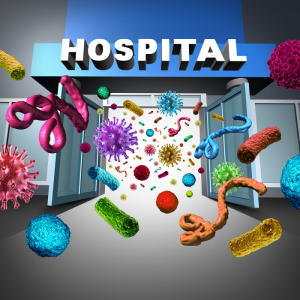From the July 2016 issue of HealthCare Business News magazine
By Thom Wellington
Why refocus? Consider this: hospitals are starting out in the red as soon as a patient is registered due to health care-acquired infection (HAI) costs. Based on the cost data from extensive research by Lynn White, M.D., hospitals are looking at a surcharge of $1,100 per patient before they even get to their room. Nearly 1.7 million HAIs occur annually in acute-care hospitals, resulting in tens of thousands of patient deaths and costing billions of dollars to the U.S. health care system. The total direct, indirect and nonmedical social costs of HAIs are estimated at around $96 billion to $147 billion annually, due to the loss of work, legal costs and other patient factors.
Additionally, hospitals with poor HAI scores relative to their peers also suffer from a CMS penalty of 1 percent of reimbursement being withheld. Since most HAIs require patient readmission, hospitals can also be penalized an additional 1 percent. If hospitals receive a poor patient score, then it is 1 percent more. This year each of those penalties increase to 2 percent and will continue to increase to 3 percent in 2017. The government knows that the fastest route to reducing the billions of dollars lost on HAIs is to get serious on penalizing hospitals that are not improving outcomes.
The vast majority of economic and cost analyses of HAIs focus primarily on direct medical costs, as these costs directly impact hospital finances. However, due to the large number of deaths, it is time to get everyone in the building involved in making the hospital safer for your patients. Private industry gets it. As an environmental specialist, I was recently investigating a problematic odor in the data center at a major car manufacturing plant.
Before I could enter the plant I had to show proof that I had participated in their specific safety program which is required annually. What makes it more interesting is the value of one of this facility’s cars is the same average cost of one patient’s HAI at most hospitals. The manufacturer values its product and protects it by making sure everyone knows the rules of working in their plant. Yet, hospitals allow many people to work in their facilities that know nothing about the dangers their work can create for a patient.
Just like a great football coach would not send his team out on the field with only a quarter of them knowing the play — the same needs to happen in hospitals. If the play is to reduce costly HAIs and improve quality outcomes, then more than a handful of people need to truly understand the importance of HAI prevention techniques in today’s health care environment.
